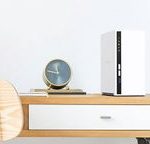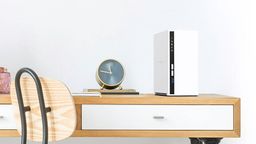March 3 (Portaltic/EP) –
The devices of the apple ecosystemsuch as Apple Watch or AirPods, integrate various functions designed to take care of hearing health of users, such as ‘app’ for Noise or adaptive ambient sound, as well as other tools to offer facilities to those who suffer Hearing loss and they are affected when conversing with other people or listening to bells or alarms.
The technology company led by Tim Cook has years focused on developing functionalities related to the field of health. For example, as with the functions dedicated to hearing, it is also working on new features aimed at caring for cardiac health in its smart watches, such as warnings of irregular heartbeat or monitoring of the so-called aerobic capacity during exercise. .
Now, on the occasion of world hearing day which is celebrated this Friday, March 3 with the intention of raise awareness about hearing loss and support people who suffer from itApple recalls some of the functions that integrate your devices like the Noise ‘app’ on the Apple Watch, or the conversation amplification function for AirPods.
According to the data provided by the World Health Organization (WHO), 430 million people all over the world suffer from Hearing losswhich means the 5 percent of the world’s population. Within this framework, Apple’s benefits are intended to help people across the broad spectrum of hearing loss.
In apple watchusers can find the app Noise, which monitors and protects hearing health. To do this, it uses the microphone to measure the decibel levels in the environment and, based on this, emits notifications that alert to the user when they have exceeded recommended noise levels that can affect hearing.
To activate this function, the user must open the Watch ‘app’ on their ‘smartphone’. Once open, touch the ‘My watch’ tab and, after that, ‘Noise’. Likewise, click on ‘Noise Threshold’ and finally select the decibel level at which the user considers that the ‘smartwatch’ should warn.
In fact, according to the results of the Apple Hearing Studyhe 25 percent of the participants in this study experienced a average daily exposure to environmental noise above the limit recommended by WHO. In this regard, another of the functions that Apple offers is the adaptive ambient sound and the active noise cancellation with AirPods.
With the adaptive ambient soundthe headphones automatically reduce the volume of ambient noise of high decibels to which you are exposed, that is, the one that occurs in a traffic jam, next to some works or traveling on public transport. In this way, hearing is protected in situations such as daily commutes to work.
Likewise, for the occasions in which the user considers that he is going to be exposed to noisy environments, he can previously activate the function of active noise cancellation. To activate this tool, the user must enter ‘Settings’ and click on ‘Your AirPods’ on your iPhone. After that, turn on Adaptive Ambient Sound or Active Noise Cancellation.
Following this thread, Apple includes a adjustment system for audio levels which is based on sending an notification to the user when listening to audio at a high volume during “long enough to affect your hearing,” the company explains. Also, when the user returns to connect headphoneseither by cable or by Bluetooth, the volume will adjust automatically at a lower level.
This function allows users to turn the volume back up when they consider. To configure it, they must enter ‘Settings’, ‘Sounds and vibrations’ and ‘Headphone security’. Once inside, they must click on activate ‘Reduce loud sounds and drag the slider’.
Continuing with this configuration line, you can also adjust AirPods to the different needs of users. Whether they are listening to music or talking to someone, users will be able to adjust the audio with options such as amplify soft sounds or adjust certain frequencies sound based on individual preferences.
To do this, Apple offers a series of hearing tests that help the user configure up to nine unique profiles based on their sound preferences and recommended hearing settings. Similarly, if the person already has a audiogramcan import it to this system settings via a document or file to make your AirPods conform to these guidelines.
HEARING LOSS
Regarding the options for people suffering from hearing lossApple has a function of conversation amplification for AirPods. With it, the headphones help to hear more clearly by focusing on the voice of the person directly in front of the user. This option is useful for conversations in noisy environments.
To carry out this help, AirPods use the automatic device learning for detect and amplify soundsas, in this case, that of a person who speaks among all the sounds of a crowded space. Users will be able to use it once the ‘Custom ambient sound mode’ is activated within ‘Headphone settings’ and, after that, ‘Conversation amplification’. It is also available for the first and second generation AirPods.
https://www.youtube.com/watch?v=8MOKVQNX1mU
Another of the help features that Apple integrates is the listen live, with which the iPhone or iPad acts as a microphone for AirPods. Thus, it sends the sound directly to the AirPods, even allowing someone at the other end of a room to be heard. This option is also available on Beats headphones and Made for iPhone headphones.
In order to use this tool, users need to add it in ‘Settings’, ‘Control Center’. Within the icons available in the list of more controls, the ‘Hearing’ must be added. Once it has been done, the user will have to click on the ‘Audition’ icon and touch ‘Listen live’. Once activated, you must place the device that will act as a microphone in front of the person you want to listen to.
Finally, Apple also includes the tool sound recognitionwith which the devices iPhone or iPad are able to identify sounds like smoke alarms and doorbells and send a notification when detected. In addition, this function allows the user to train the device to identify other types of alarms such as the beeping of kitchen appliances.
To make use of this function, it must be activated within ‘Accessibility’, ‘Sound recognition’ and then activate the sounds that the user wants the iPhone to recognize.











![[Img #74692]](https://thelatestnews.world/wp-content/uploads/2024/12/What-do-11-and-12-year-old-boys-and-girls-300x200.jpg)